Tiny bell threaded on hemp cord ringing in the spring, 5 March 2025
Hello and welcome to this early March edition of Bracken & Wrack. Each night I’ve watched the silver crescent grow a little more definite in the clear but icy night skies here in Norfolk, and that tells me it’s high time for our gathering.
As often seems to be the case, it seems as if we’re standing on an edge, a moment between seasons. Perhaps that’s because there are only certain days in the year - here in the UK, anyway - when we truly feel in the middle of things, with no hint remaining of the season just gone or next to come. ‘We’ve turned the corner’, we keep saying cheerfully to each other and then the next morning we wake up to thick ice on the van windscreen and -2 showing on the temperature gauge.
But then again, the rollercoaster ride is thrilling in its own way and certainly keeps all your senses on full alert, alive to whatever each day and night may bring.
So far this week it’s been dry and sunny with glorious blue skies here in Norfolk - and also in Derbyshire where I was last weekend - but a day or two before that when I took a muddy walk from the cottage it was quite a different matter.
In fact, it wasn’t the most alluring of mornings to step out along the lane, but suddenly I felt the need for light and space, for wide vistas across still-wintry fields. As my boots squelched underfoot, the hastily erected ‘mud on road’ sign really seemed surplus to requirements.
Fields on either side of the lane had been freshly turned over, their huge clods resembling nothing more than chopped chocolate chunks waiting to be folded into a bowl of muffin mixture. Each sliced surface shone as though polished by the cutting-blade.
The weak sun showed as a glowing round above the veiling cloud. The sky so light, bone grey, yet darkening. A whiff of fox musk and I turned sharply to see a trail leading through a gap pushed into the brambles and a track, faint but unmistakeable even without the telltale aroma.
Oak fingers prodded the sky in all directions, the swelling buds turning twigs into bobbled scribbles. Beneath, tall grasses stood bleached and brittle against dark earth and silvery sky. A winter palette, still.
The caw-caw-caw of a trio of crows, then a massive shape caught in the corner of my eye, sailing over and behind a young oak. A heron? Scouring the hedgerow for a gap, by the time I found one the sky was empty again. If it was a heron, its flight must have been straight and sure.
More mud around the brick and steel farm buildings. A few stray sugar beet showed gold against the grassy verge. Close up, I realised that the brilliant white patches I could see from afar were areas where their sweet flesh had been nibbled away. There is still a hunger in the wild.
Nibbled sugar beet
Since the last Bracken & Wrack I’ve been preoccupied with my latest story-candle project, Fen Bride. I always seem to forget how much time these projects require, not only the physical production and packing of course but also gathering the stories themselves, and planning the little adventures that call out to be undertaken in their service. Before Fen Bride, the last candle was Hikey Sprite - whose stories were all about the Fair Folk - and that project began nearly a year and a half ago, so I suppose there’s been plenty of time for the memory to acquire a rosy tint :-)
Still, I have to say that I always learn a huge amount from what each candle wants to show me. I never know before I start what that will be, and it’s always surprising. And best of all, when the candles reach their new keepers at the end of the project, well, that’s when the stories will really begin.
This edition of Bracken & Wrack inevitably reflects the Fen Bride journey so far: a journey deep into the Fens where old family ghosts still linger, and folklore never melted away. There are so many stories I could delve into here, more than a lifetime’s worth, but I’ve picked out just a few of the bright nuggets that whispered from the black fenland peat.
There’s also the first of a new series that I plan to include in every Bracken & Wrack , where I’ll share some of the books, articles, podcasts and videos I’ve been enjoying along the way. Hopefully you’ll find something to enjoy too.
So, without further ado, let’s get started. In this edition, we have:
A Walk on the Far Edge of Winter
The Devil’s Dyke
A Glimpse of the Fen Bride’s Hem: a tangle of thorns with the promise of blossom
Gifts for the Lady of the Waters
‘King of the Strangers’: a short film I loved
A GLIMPSE OF THE FEN BRIDE’S HEM
What is a fen and how is it different from a marsh? There doesn’t seem to be a definitive answer to this, and certainly the eerie causeways over misty stretches of reed and water, with willows shaking out their witchy fingers here and there, have been the setting for many a tale and snippet of folklore however they are named. Here in Norfolk such watery places seem to go by either appellation. We have, for example, not too far apart, both Ludham Marshes and Catfield Fen.
Strumpshaw Fen on the eastern side of Norfolk, far from the fenlands of Cambridgeshire
In pursuit of our Fen Bride, though, we eschewed the easy route and travelled westward to the Cambridgeshire Fens. Really, it’s when you reach the dark, dark peat of the Black Fen that you feel you’ve truly arrived. For me it’s ancestral land, since all my maternal line come from an area that hovers between Cambridgeshire and now-theoretically-extinct Huntingdonshire. All, that is, except one of my great-grandmothers, Harriet Pepper, who it’s whispered was a native of Norfolk. Admittedly the village her family hailed from is near Downham Market which is not far from the border and pretty fen-like itself. Still, as a Norfolk girl I’m proud of that connection.
Before the Fens were drained by Dutch engineers (causing huge unrest, but that’s another story - see my video recommendation below) these fenlands of sky and water were vast beyond belief, covering about 15,500 square miles. Now, there are only four small areas left that offer a glimpse of how they would have been experienced by our ancestors before the mid seventeenth century when the work of reclamation for agriculture and profit began.
One of these four windows into the past lies at Wicken, which happens to have been one of the named villages on the way to visit my grandparents’ home when I was a child. The closest I ever got, though, was a roadside place name and we never visited Wicken Fen although somehow I was aware that it was a nature reserve. At that time, it was the only place in England where you could see swallowtails although I’m happy to say they are now more widespread and I’ve encountered one of these beautiful butterflies myself at Hickling nature reserve not far from home.
Our road trip was to take in Wicken, but there were other locations to visit on the edge of the Fens, and first came a walk with the Devil, looking down through an impenetrable tangle of blackthorn, whitethorn, bramble and briar to the depths of his Dyke below. In fact, the massive Devil’s Dyke near Burwell in Cambridgeshire was probably constructed to defend that very edge-place. Unbelievably massive, it runs under wide open skies for over seven miles. Of course, such a landscape feature has attracted its share of folklore.
The Devil’s Dyke near Burwell - it’s hard to convey the sheer scale in a photo. The lower image shows the bank dark with its tangle of defensive thorns rising above the ditch. 13 February 2025
Stretching between Reach and Wood Ditton, the Devil's Dyke is a well-preserved bank and ditch earthwork, marking a corridor between marshy fen and dense woodland. Probably Anglo-Saxon, it was first referred to in the eleventh century as Reach Dyke. In the Middle Ages it was known as the Great Ditch, or St Edmund's Dyke. It was actually only in post-medieval times that the name Devil's Dyke became attached to it. Legend tells that the Devil arrived at a wedding at St Etheldreda’s church at Reach, but uninvited as he was, the guests turned him away. As he fled in anger, his huge flaming tail scored a groove in the earth, forming the dyke.
Although the Devil fled from the church in this story, tradition says that you can make him reappear if you walk around St. Etheldreda's seven times. Another version says that running round it seven times will make the Devil appear at the ruined archway behind the nineteenth century church, all that remains of the former chapel of St John that used to stand there.
I found these stories about the Devil and his Dyke on the Hidden East Anglia website which has a very useful gazeteer. If I’d seen this before the trip I might well have tried walking or running seven times around St Etheldreda’s myself ;-)
I’ve already mentioned the strikingly dense thorn-thicket carpeting the side of the Devil’s Dyke. Walking along the thin earthen track along the top of the bank we conjectured that their ancestors may have been deliberately planted there as a very effective form of defence against anyone reckless enough to try to scale it in times of conflict.
Later, in the pub, I found myself thinking more about brambles and wrote this in my notebook:
BLACKBERRY FLOWERS IN HER HAIR
If a Fen Bride married in spring, she would surely wear blackberry flowers in her hair. Along the old drove ways, along the edge of dyke and lode, in all the betwixt and between paces where the vines can get a foothold, there they are. Arching over the tracks or snaking between the reeds, they are always ready to trip the unwary.
Yet the fruits in their season will provide a feast for berry-loving birds of the Fen, as well as filling the rush baskets of fen-folk. They, of course, will have been watching for the moment that the tiny green fists soften and acquire a pinkish hue before turning rosy, and then taking on the bruised purple of the deepest clouds seen reflected in silvery pool and drainage ditch alike.
But the flowers of the blackberry, heralds of bounty, have a subtle beauty all of their own. Who could overlook them? In some years their white quickly pinkens, leaving the bushes hovering between the shades like watercolour flicked onto a page.
Of course, apart from human and animal-kind, the blooms are also beloved of the Fair Folk. That’s not surprising when you gaze into each delicate cup and see the golden stamens dancing in a burst of vivacity like the sudden laughter of a fairy hiding between the leaves.
And as the petals fall, the promise of juice-stained tongues, of purplish streaks on the first fallen willow leaves, vivid against the gold and pale green and the bleached hues of a spent reed flower.
How did the fen-folk use brambles? It’s unthinkable that in their abundance they were not a valuable resource, as much so as fish, reed and willow although perhaps second to eels.
Fenland ghosts: an image from one of the information panels at Wicken Fen
The long whippy vines can have their thorns stripped off with one deft (gloved) stroke and be used in the weaving of hedgerow baskets, wild and unruly or perhaps more refined according to the skill and patience of the weaver.
Thorns on, they can be gathered into a bundle or flail and a handle made at one end, ready to deal with adversity whether from human or spirit-kind. More benignly, three bramble leaves floated in water make a spell against burns.
And the ripe inky berries can be lovingly gathered to make a good country wine to toast our Fen Bride. She already knows how to preserve autumn’s harvest in myriad ways, passed down from mother, grandmother, and perhaps even the spidery writings of her great-grandmother. Soon her own kitchen shelves will be aglow with rows of jams and jellies, their glass jars sparkling as fenland jewels.
GIFTS FOR THE LADY OF THE WATERS
This early part of March seems a particularly tricksy moment to pin down. We’re well beyond Candlemas-tide yet the Spring Equinox is still a couple of weeks away and Easter almost out of sight since it falls so late this year.
Then I remembered that the Festival of Isis of the Ships falls in early March.
I hadn’t heard of this festival until I read the work of Levannah Morgan who mentions it both in A Sea Witch’s Companion and A Witch’s Year. Levannah tells us that this great festival was traditionally celebrated all around the Mediterranean Sea in early March. She gives the date as March 4/5, but because of the calendar shift I feel this can quite legitimately be thought of as moveable and the festival could be marked at any point in the first half of March that feels right for you.
Worship of the Egyptian goddess Isis had spread throughout the Graeco-Roman world, and the Festival of Isis of the Ships (Isidis Navigidium) honoured her as Stella Maris, or Star of the Sea. This was a major celebration, as Isis protected ships and sailors, including the ships that brought the grain from North Africa to feed the people of Rome.
On the first day of the sailing season, around 4 or 5 March, great processions and feasts took place, and model boats laden with offerings of fruit and flowers for the goddess, were floated out to sea.
Levannah says that each year she makes a paper boat to carry offerings and sets it on its way, together with a group of friends who gather to send their own gifts to the goddess. It must be a beautiful sight. As she points out, if you choose to do this you’ll need to find a suitable place to launch your boat such as a harbour or estuary so that the tide will carry it straight out to sea.
The estuary of the great River Yare at Gorleston, Norfolk, 8 March 2025
What if, like me, you feel no special affinity with Isis, despite the knowledge that statues of her have been found here in England, probably brought over by devout Romans? Levannah points out that folk customs, clearly inspired by this festival and its date, evolved differently in other lands to honour local deities and archetypes. If you would like to honour your local river or sea spirits, or to petition for the safety of those who set sail in perilous waters, it’s good to remember this idea, and find your own way of marking this festival.
Here in Norfolk we have a long coastline, bringing a feeling of closeness to the sea and to maritime communities. There’s also a strong attachment to St Mary, whether we see her as a Christian saint to whom dozens of our medieval churches are dedicated or as a folk-goddess of the land, perhaps in the guise of the Chalk Lady of Norfolk whose counterpoint is the Flint Lord.
One of Mary’s titles - possibly inherited from Isis - is Star of the Sea. I remember seeing a beautiful hanging sign swinging over one of Walsingham’s cobbled pavements depicting her in that role. The artist had painted her crowned with stars and with the sea swirling gently beneath her, rather like the Empress in some tarot decks.
With that image having stayed in my mind for years now, I can’t help thinking of Mary, Star of the Sea when sending out my prayer or spell or petition or expression of gratitude for the bounty of the seas - or perhaps the gesture of launching a tiny boat onto the waves encompasses all of these.
That’s the beauty of a practice like this. It’s utterly adaptable to your beliefs and in time becomes a part of your personal wheel of the year. Something to look forward to year after year, as the tides roll endlessly up and down the shore.
Sunrise at California Cliffs, Norfolk, 8 March 2025
‘KING OF THE STRANGERS’: a film about Tiddy Mun
‘Before the dykes were dug, there was marsh and more marsh, as far as the eye could see.
The whole place teemed with boggarts and will-o’-the-wykes and other evil creatures In the darkness, hands without arms reached out of the water and beckoned, voices of the dead cried and moaned all night long, and goblins danced on the tussocks. There were witches too; they mounted the great black snags of peat, and turned them into snakes and raced about on them in the water. No wonder people stayed indoors after nightfall.’
So begins Kevin Crossley-Holland’s evocative retelling of the traditional Fenland tale of the spirit without a name that everyone knew as Tiddy Mun. By night he crept, limping, through the darkness, his long white hair and beard and grey gown making him almost indistinguishable from the mist. His movement sounded like running water and the wind; his laugh like the screech of the peewit or lapwing, in local dialect a pyewipe.
Tiddy Mun did humans no harm and sometimes did them a good turn. When constant rain made the waters rise and flooded people’s homes they would go out under the new moon and call over the Fens: ‘Tiddy Mun without a name, Tiddy Mun, the waters are washing through’. They would hear the peewit-screech, and in the morning the waters would have fallen away. Tiddy Mun had protected his people once again.
All that changed when rich farmers and surveyors moved in and paid Dutch engineers to drain the Fens with promises that green fields would stretch to the horizon and no-one would suffer from marsh-fever ever again. But the fen-folk loved their land and were angry, and they knew that Tiddy Mun would be too. ‘Bad is bad’, they said, ‘but meddling is worse’.
As the story unfolds and the fen dries up, Tiddy Mun unleashes his anger and famine rages, babies die and people become pale and ill. Eventually they call on Tiddy Mun on the night of the new moon, each man, woman and child carrying a cup of fresh water in offering. ‘Tiddy Mun without a name, here’s water for you, water for you, lift your curse’.
Out of the stillness, suddenly the dead babies cry and whimper most heartrendingly and then comes the unmistakeable peewit-screech of Tiddy Mun and the people know that the curse would be lifted.
But each new moon, all the people continue to go down to the dyke in the dark with their stoups of water, tipping it in as a gesture to Tiddy Mun that they would bring back the undrained fenlands if only they could.
We could all do with the goodwill of Tiddy Mun on our journeys into the wild places. So it was that we humbly asked him for blessing and protection by the edge of the water on Wicken Fen, playing music for him and sending sweet smoke curling over the reeds.
And my first recommendation is for a short film which does a brilliantly creative job of telling the story of this misty Fenland spirit and putting the folklore in context. I hope you’ll enjoy it as much as I did.
Another Bracken & Wrack pick next time :-) But now, let’s take the track from the heath back onto the lane and head home to the cottage. Oh look! The sparrows are back, flitting between the low eaves and the little hawthorn tree in the corner of the front garden. Come into the kitchen and I’ll put the kettle on. There are lots of folklore books over there if you fancy a read while I make us a cuppa.
The track leading from the heath. I saw the end of a fox’s tail disappearing into the gorse just here which was very exciting! 4 March 2025
Until next time.
With love, Imogen x
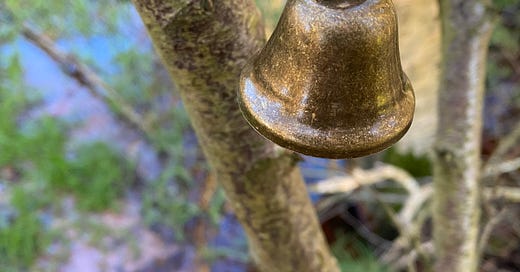



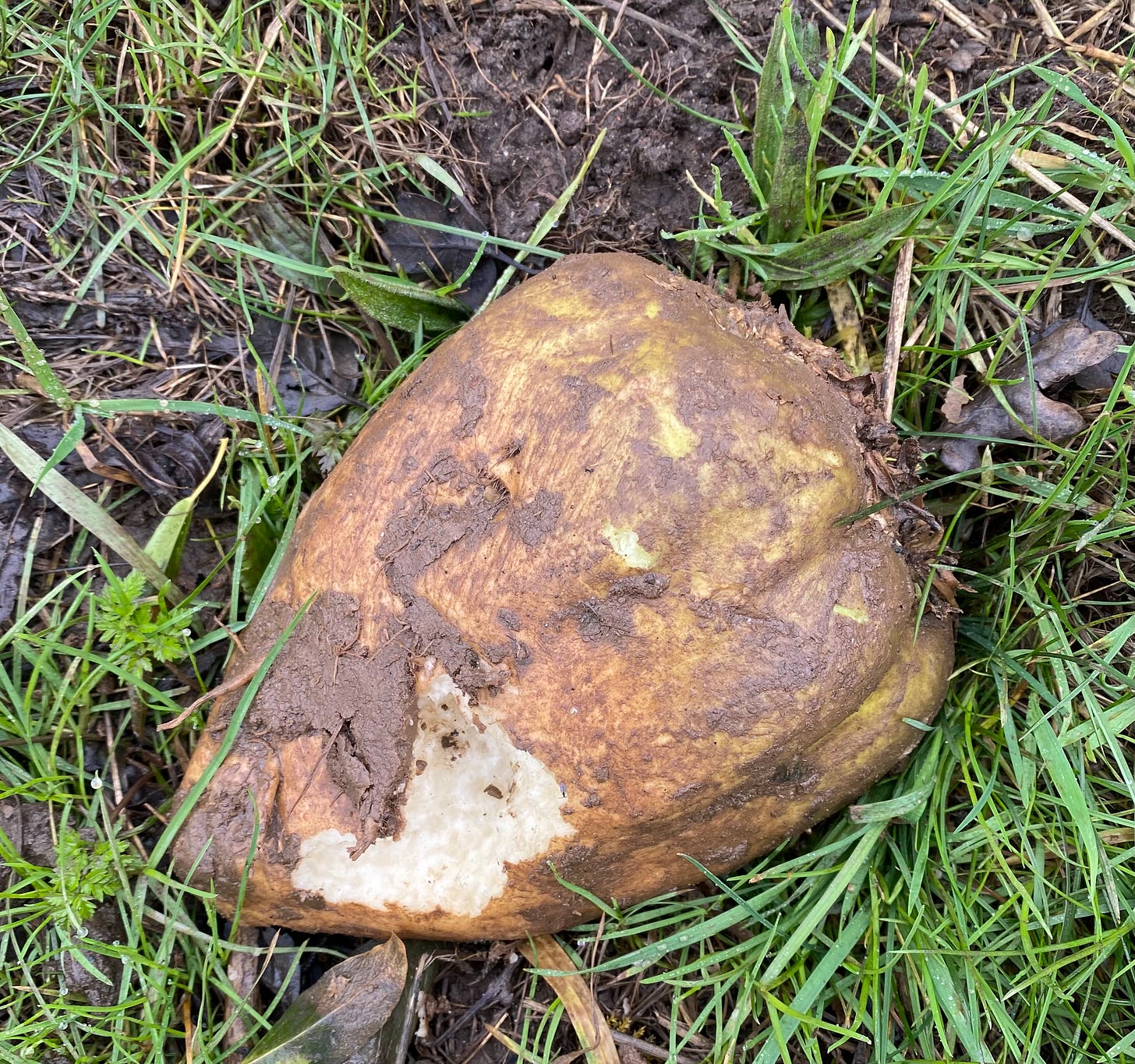
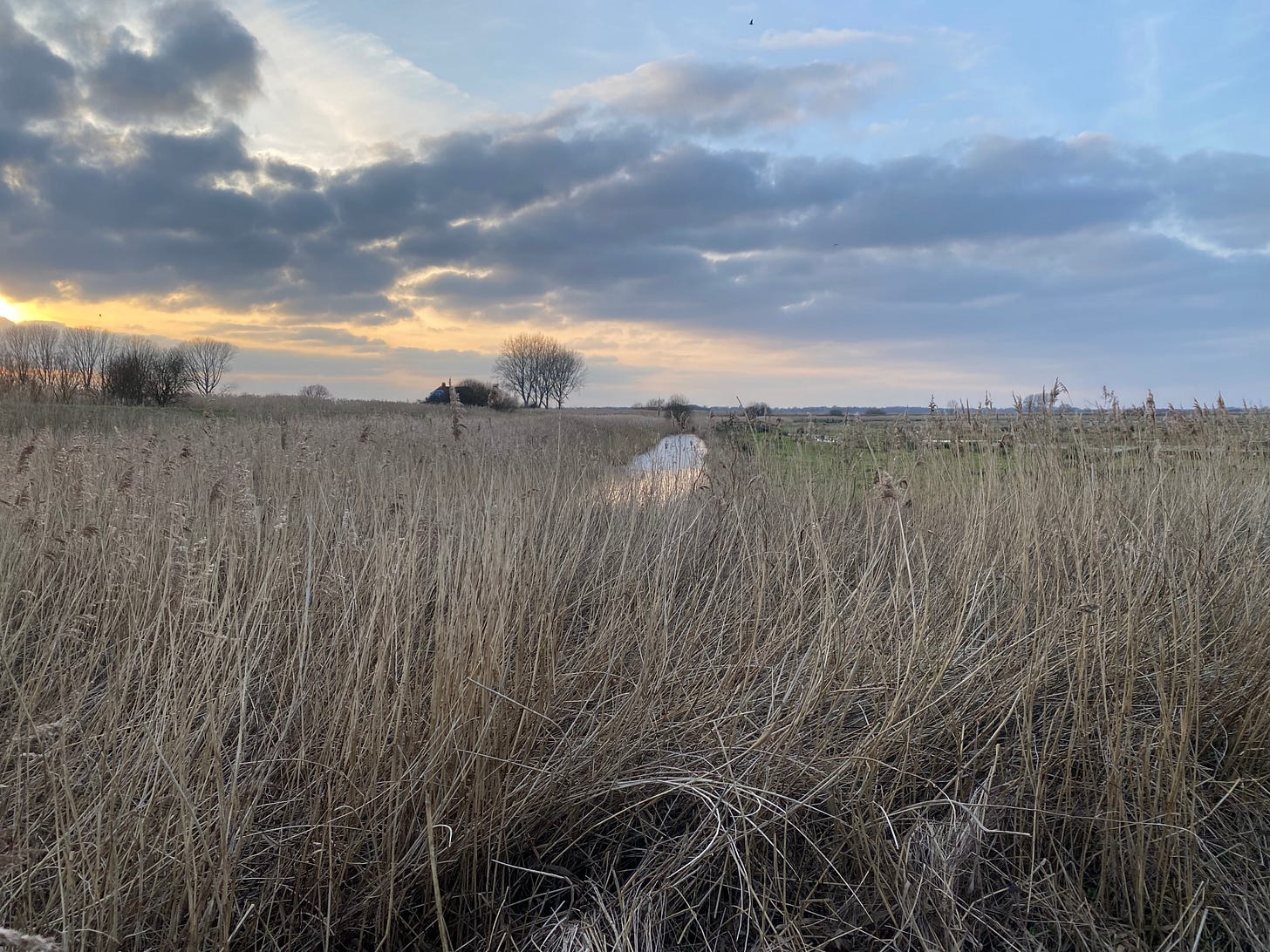
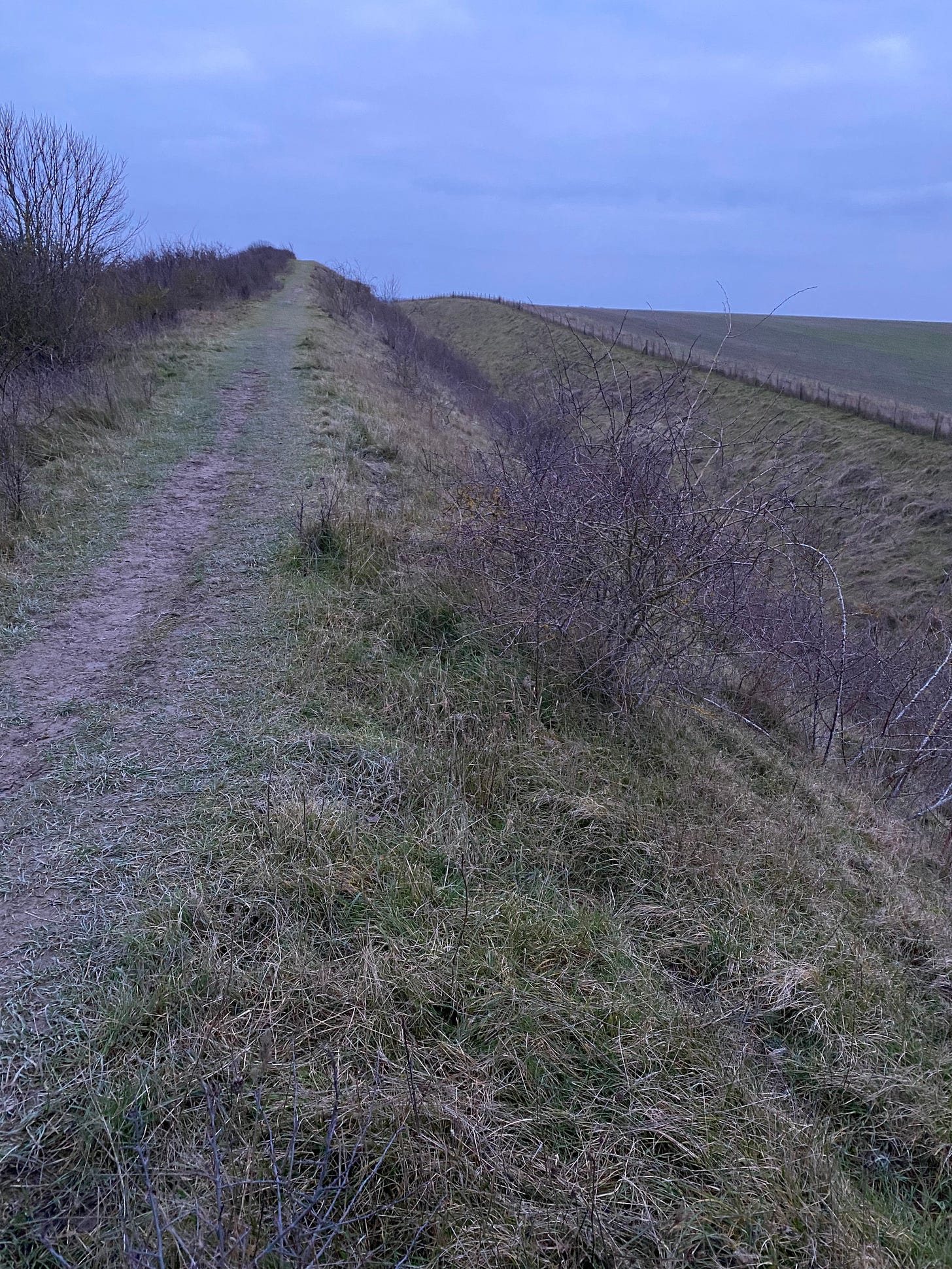

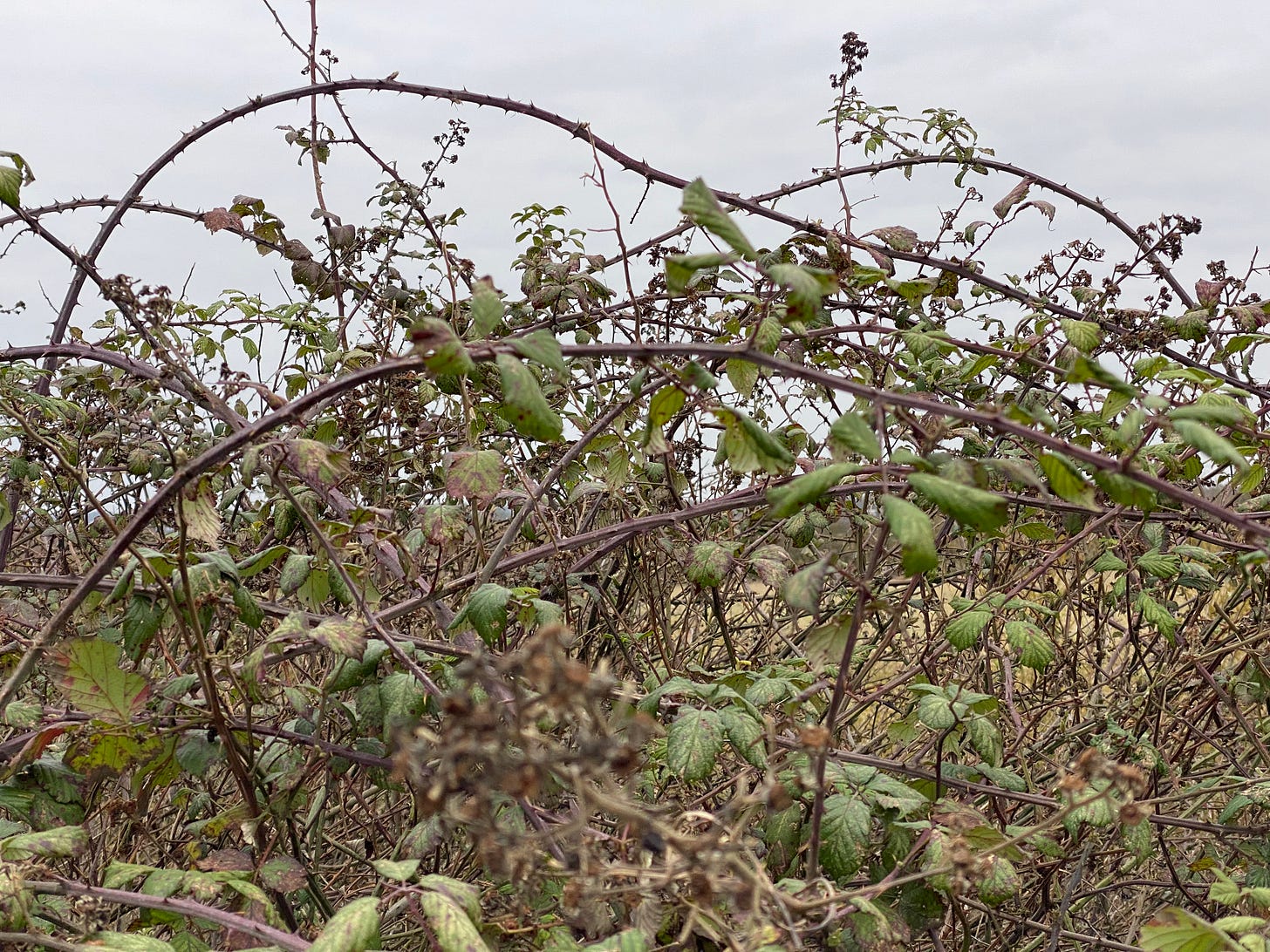

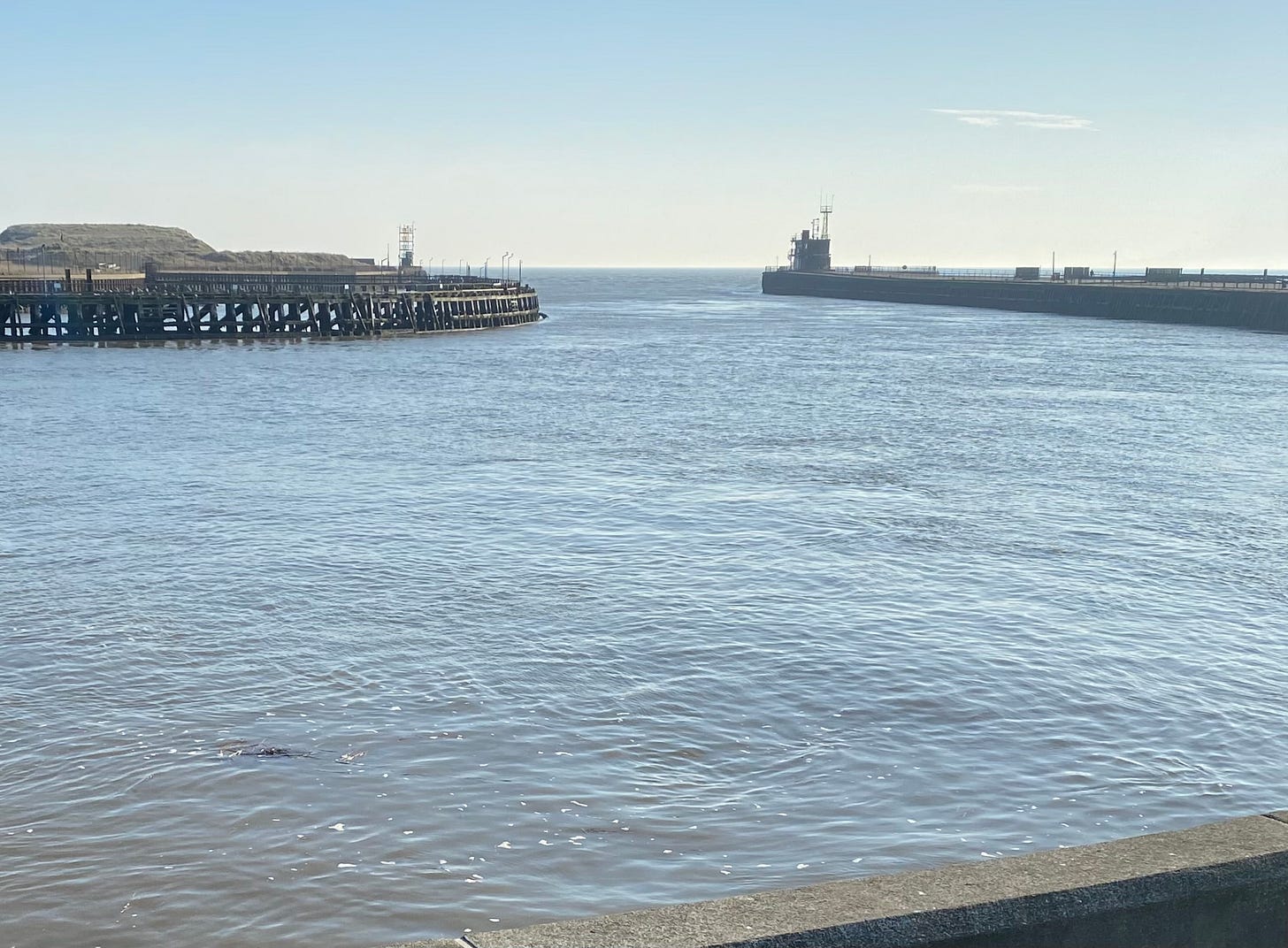
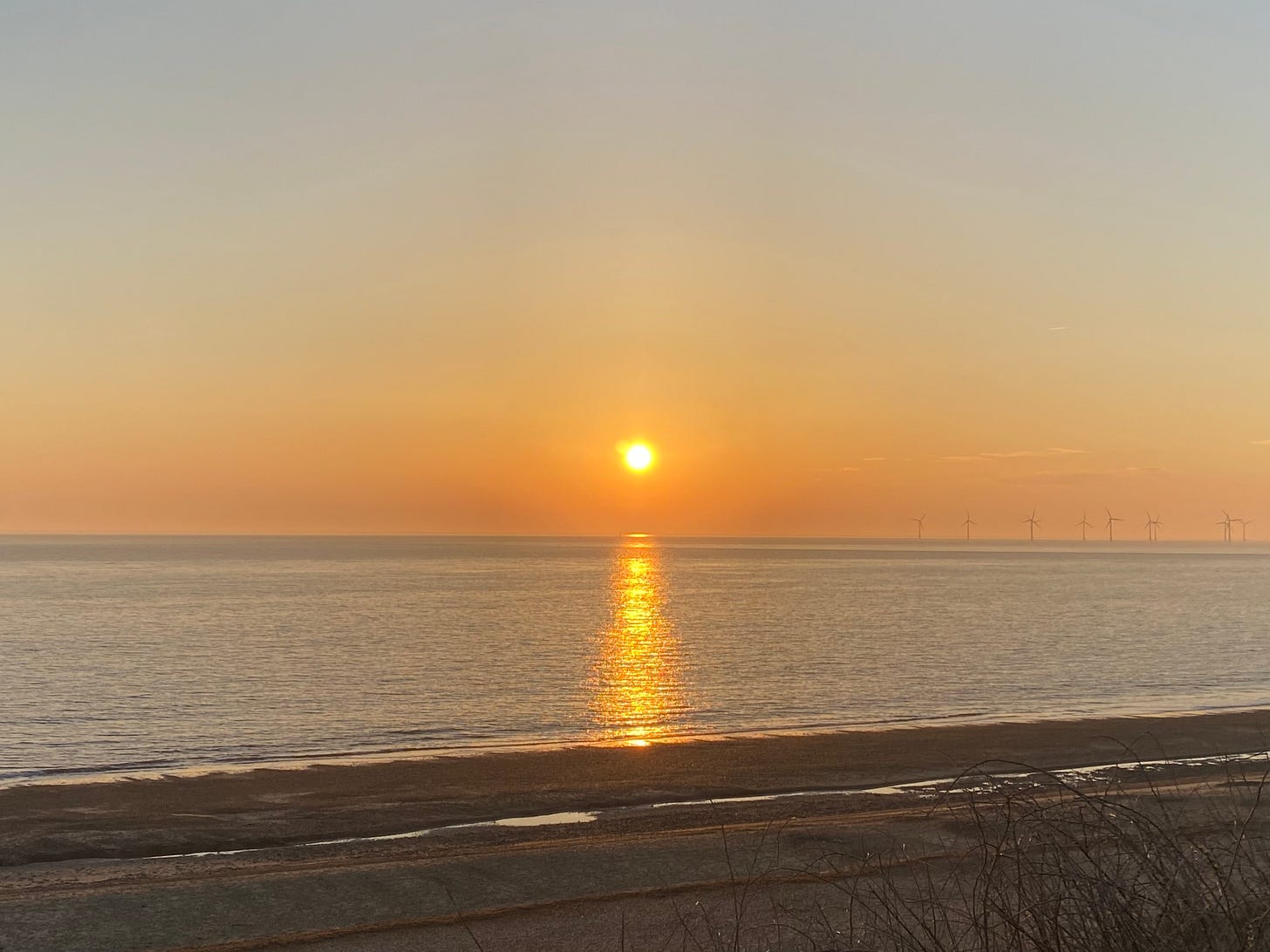
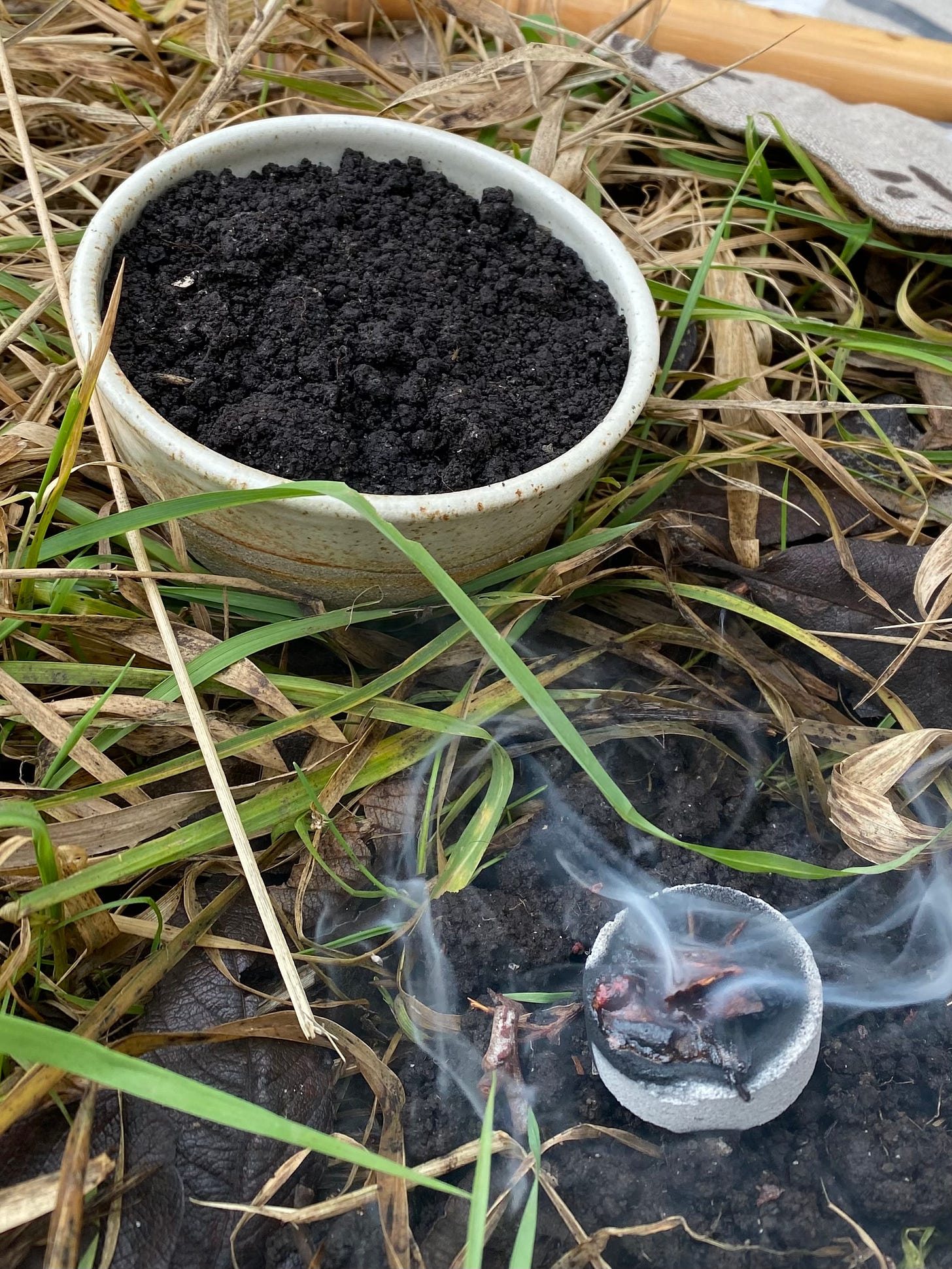
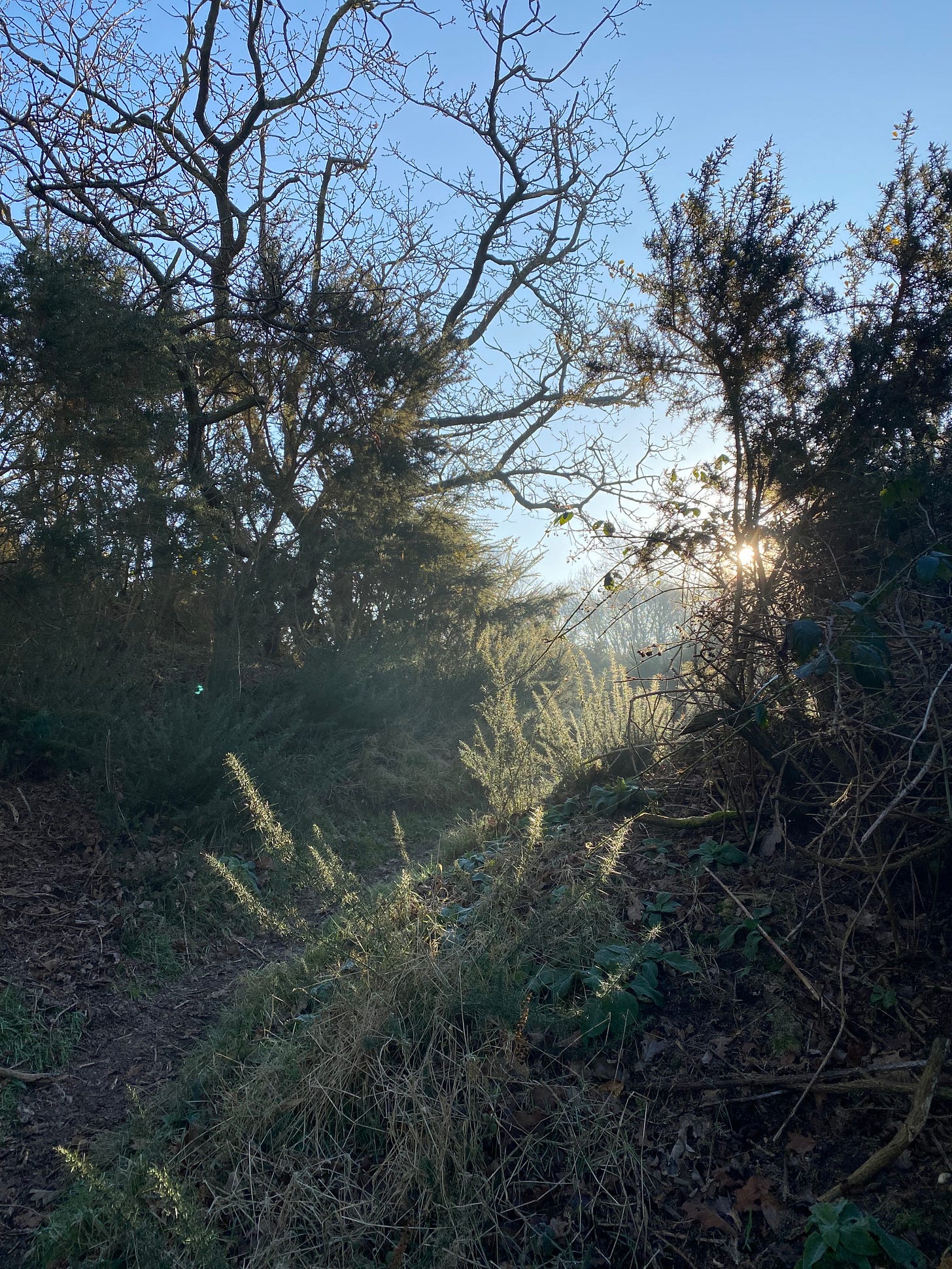
New to Substack, thought you might enjoy our little song about “Tiddy Mun” if you have not already seen it, took 18months to film the video, a lot shot on the fens, the cultural, historical and history of the fens and the little fellow explored succinctly in these 6 minutes, love to know what you think , Wergulu Blue
https://youtu.be/dvwmt3JDNx4?si=W4-Qi0JQZuvBQXBd
Hello Imogen, it was lovely to meet you this week at the Writers’ Hour mingle, and now to read your words. How beautifully you evoke the very particular landscape of the fens. I used to love walking at Strumpshaw, and Wicken Fen is another magical spot. Thank you for conjuring these memories.